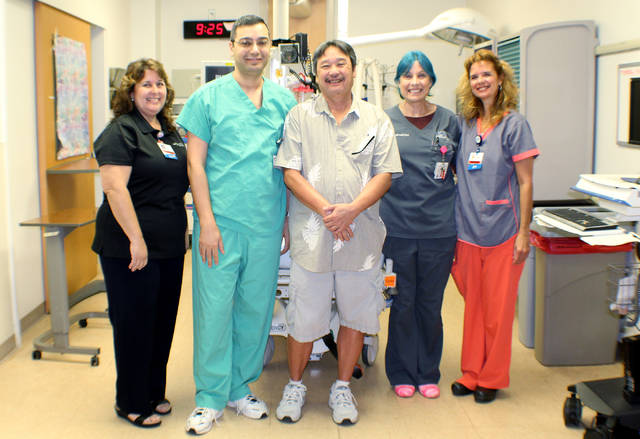HILO — A recent study shows sepsis death rates were five times higher in Hawaii residents — 14.4 per 100,000 people — than in Los Angeles, 2.7 per 100,000. ADVERTISING HILO — A recent study shows sepsis death rates were
HILO — A recent study shows sepsis death rates were five times higher in Hawaii residents — 14.4 per 100,000 people — than in Los Angeles, 2.7 per 100,000.
The two locations were compared due to their diverse populations.
Sepsis can develop either from an internal infection or from an infected external wound, when infection spreads to the blood.
According to the Centers for Disease Control and Prevention, which calls sepsis a “complication caused by the body’s overwhelming and life-threatening response to infection,” the most common sepsis causes include infections of the lungs, urinary tract, skin and gut.
It is a contributing factor in 6 percent of all U.S. deaths.
Potential reasons for death-rate differences, according to the Public Library of Science study, include cancer, obesity, gender, ethnicity and access to health care.
Native Hawaiians have the highest rate of sepsis death in Hawaii: 29 per 100,000 people.
Researchers conducted the large study of more than 190,00 Japanese-American, Native Hawaiian, Latino, black and white U.S. residents age 45-94 over 17 years.
During the study, more than 49,000 participants died — of all causes. Of them, 345 died of sepsis.
Hilo Medical Center medical staff have been fighting sepsis for years.
Hospital staff have treated an average of 63 sepsis patients per month so far in 2017, said spokeswoman Elena Cabatu.
But, she said, “our survival rate is 93.6 percent.”
Stephen Wong, of Hilo, is one of those fortunate survivors.
Wong nearly died of sepsis in 2014.
He’s fortunate because the hospital had recently added a “sepsis alert.” Patients with suspected sepsis get a rapid and coordinated response, similar to those who experienced a heart attack, traumatic injury or stroke.
A sepsis alert triggers ICU and ER staff, respiratory therapists, lab technicians and X-ray techs to get ready to intervene.
Wong survived. But he spent months healing in therapy.
He even moved to Hilo to be closer to medical care.
A person is susceptible to recurrence after sepsis — and Wong got it again this year. He regained health much quicker in 2017 than 2014 because he got to the ER faster.
“I had a fever of 103,” he said this week at the hospital. “My wife came home from work, and she brought me in here. I live two minutes from here now.”
He said he represents people who get medical help quickly and those who don’t.
“The first time, it was one month I stayed here,” Wong said of the hospital. “The second time, it was four days. The first time, I could hardly walk. The second time, I skipped out of here.”
Health providers said people with sepsis often delay seeking care, hoping to get better.
Sepsis is treatable. But the longer a person waits, the tougher medical treatment gets. The elderly and very young are at greatest risk.
But, said intensive-care specialist Dr. Mouhamed Kannass, “It doesn’t matter how old you are. I had a young kid, 25 years old, just a few days ago.”
Emergency physician Dr. Judith FitzGerald said sepsis symptoms include fever, low blood pressure, sleepiness, high heart rate, shivering, confusion, low oxygen levels, rapid breathing, lethargy and pale appearance.
It’s hard to diagnose, FitzGerald said, which is why the hospital created a protocol that puts health providers on alert.
Sepsis patients “just have a ‘look’ and you just go after the look,” she said.
The blood infection can sometimes develop in the hospital.
“All of a sudden, the vital signs don’t add up,” said ICU nurse Laurie Soares. That’s why health providers pay such close attention.
Any symptom these days, Wong said, and his wife worries.
She gets out a blood pressure monitor, glucose meter and a watchful eye. If in doubt, Wong heads to his doctor or the ER.
“I call his wife a protective angel,” Kannass said.



